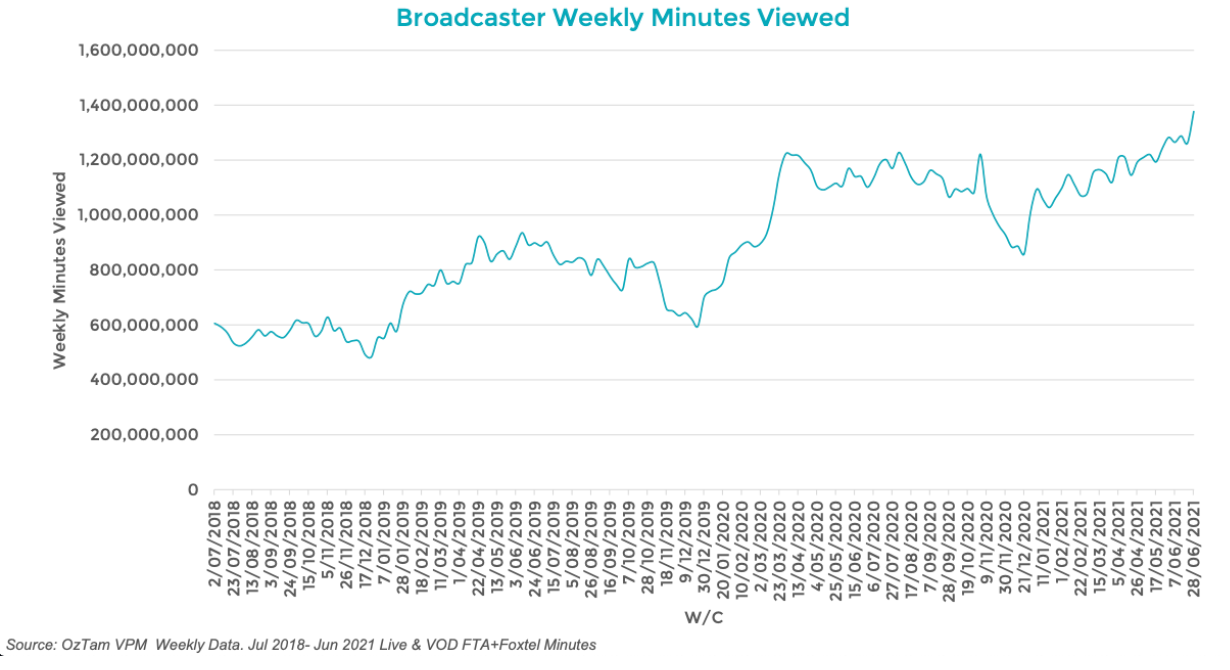Why you should give a damn about BVOD
Never mind Jeff Bezos in space. Here’s why BVOD and Connected TV should be stealing all your attention.

08 November 2021
There is no doubt that the way we consume TV has changed more rapidly in the last decade than ever before. One of the most exciting and obvious changes has been the adoption of BVOD, but what exactly is it?
Put simply, any TV watched online is BVOD and is part of the broader set of the Connected TV (aka CTV) family that includes a heady range of acronyms such as AVOD, TVOD and OTT. It can be watched either live (via live streaming) or on-demand and is available on any connected device, computer, mobile device or Smart TV. BVOD content is professionally produced, broadcast-quality and includes TV shows and movies, old shows, sport — you get the picture.
It’s a hugely exciting time for anyone and everyone who has a stake in TV. Marketers in particular though, now have the opportunity to reach consumer eyes with greater efficiency and precision in a complete brand-safe environment.
Audience measurement systems continue to contribute to the growth and accountability of BVOD. Just this month, we saw a global first with the long anticipated launch of the Total TV measurement system in Australia (VOZ). Marketers and media buyers now get a universal TV / BVOD combined audience. For the first time we can truly measure the total TV audience. TV now means Total Video.
This development also greatly benefits broadcasters and will continue to help fuel the rise and reach of CTV. In 2020, Linear TV and BVOD in the UK worked together and reached a combined total of 93.4% of the population each week (source: thinkbox.tv). That’s almost the same number of people who have been moaning that it is too hot in the UK’s sudden July heatwave.
The chart below from Australia also visualises the increasing amount of time spent watching Live TV and BVOD.

If this chart represented a company’s stock price, one would definitely be interested.
It’s no surprise, really, humans will always thirst for entertainment and sport. In Shakespeare's day, you went to the theatre; today, you just have to access your nearest available device and with the average Australian home owning 6.7 screen devices, access to BVOD and it’s advertising opportunities for brands are always within consumer reach.
Additionally, 99% of households’ TVs are HD. This highlights the real importance for brands and agencies alike to focus on ad quality. Ads need to play to the quality of the medium they appear on. Linear TV has had strict quality control for decades, but an ad optimised for mobile will look abysmal on the home HD TV and will cause serious brand damage.
Today, to truly create and deliver the best BVOD files, you must consider the multiple different file formats required for every respective broadcaster platform. This clearly can create problems and complexity for creative and production agencies, not to mention media agencies. In fact, a survey conducted by CoLab in the UK in 2018 found that 65% of media agencies were transcoding video files!
Something’s gotta’ give.
Luckily, technology platforms like Peach, through automation and collaboration, enable all the stakeholders in creative and media to simplify complexities in the video space to ensure all screens and platforms get the exact file they need from just one TV or video asset instantly.
To find out how Peach can help you make the most of your BVOD and general Connected TV capabilities, get in touch with our team now.
Categorised as:
- Opinion




